2024年3月18日,星期一,吉隆坡之行第三天
March 18, 2024, Monday, the last day of the Kuala Lumpur trip
短暂的吉隆坡之行今天就结束了,下午1点多的火车回槟城,利用上午的时间去了著名的黑风洞,Grab半个小时就到了,花费25马币,门票是免费的。黑风洞是位于马来西亚吉隆坡郊外约11公里处的一处自然奇观,也是一个重要的印度教圣地。这个庞大的石灰岩山洞群以其壮观的自然景观和印度教雕塑而闻名。
The short Kuala Lumpur trip ended today. We took the train back to Penang in the afternoon around 1 pm. We used the morning to visit the famous Batu Caves. It took half an hour by Grab, costing 25 Ringgits, and the entrance was free. Batu Caves is a natural wonder located about 11 kilometers outside of Kuala Lumpur. It is also an important Hindu holy site. This vast limestone cave complex is known for its spectacular natural scenery and Hindu sculptures.
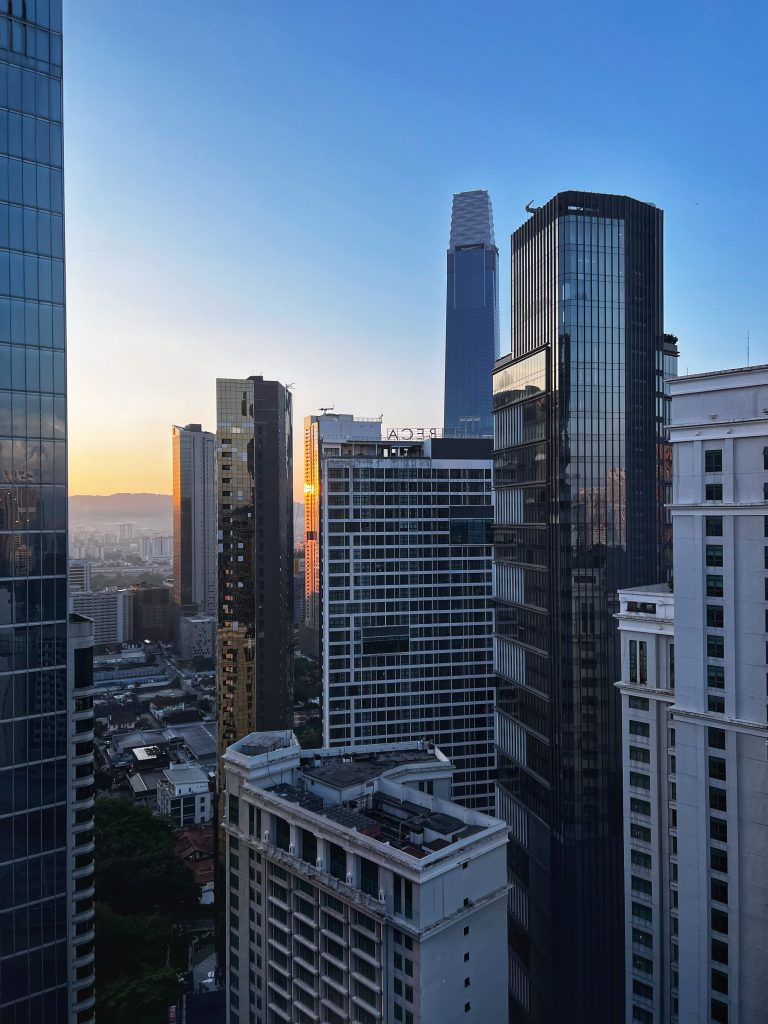
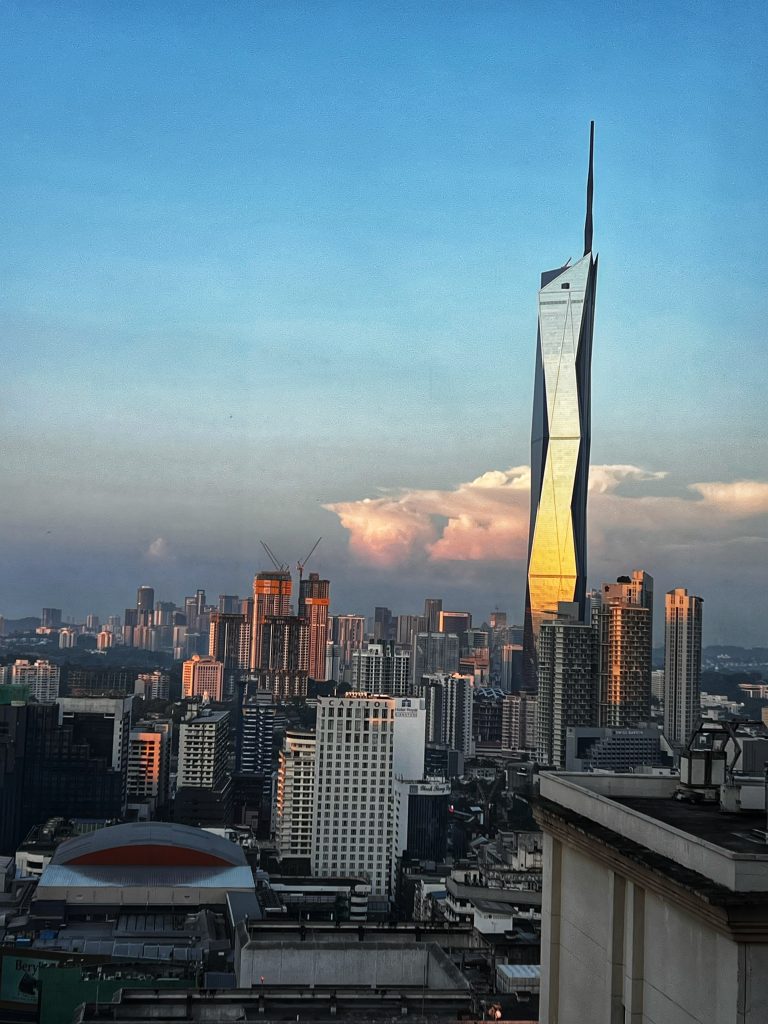
今早的酒店窗外的日出 – Sunrise outside the hotel window this morning.
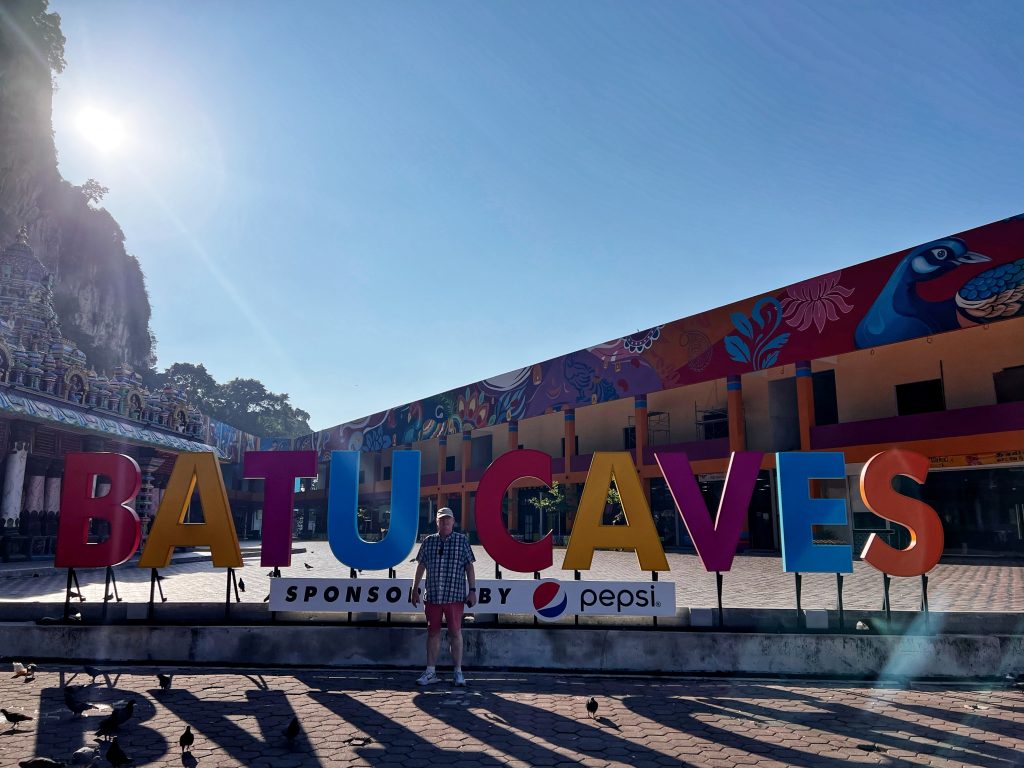
黑风洞的入口处矗立着一座高达42.7米的黄金色摩鲁卡雕像,是世界上最高的印度教神雕像之一。每年,黑风洞都会吸引成千上万的信徒和游客,尤其是在印度教节日大宝森节期间,成千上万的信徒会前来朝圣,参加盛大的庆典活动。
At the entrance of Batu Caves stands a towering 42.7-meter-tall golden statue of Lord Murugan, one of the tallest Hindu deity statues in the world. Every year, Batu Caves attracts tens of thousands of devotees and tourists, especially during the Hindu festival of Thaipusam, when thousands of devotees come to make a pilgrimage and participate in the grand festivities.
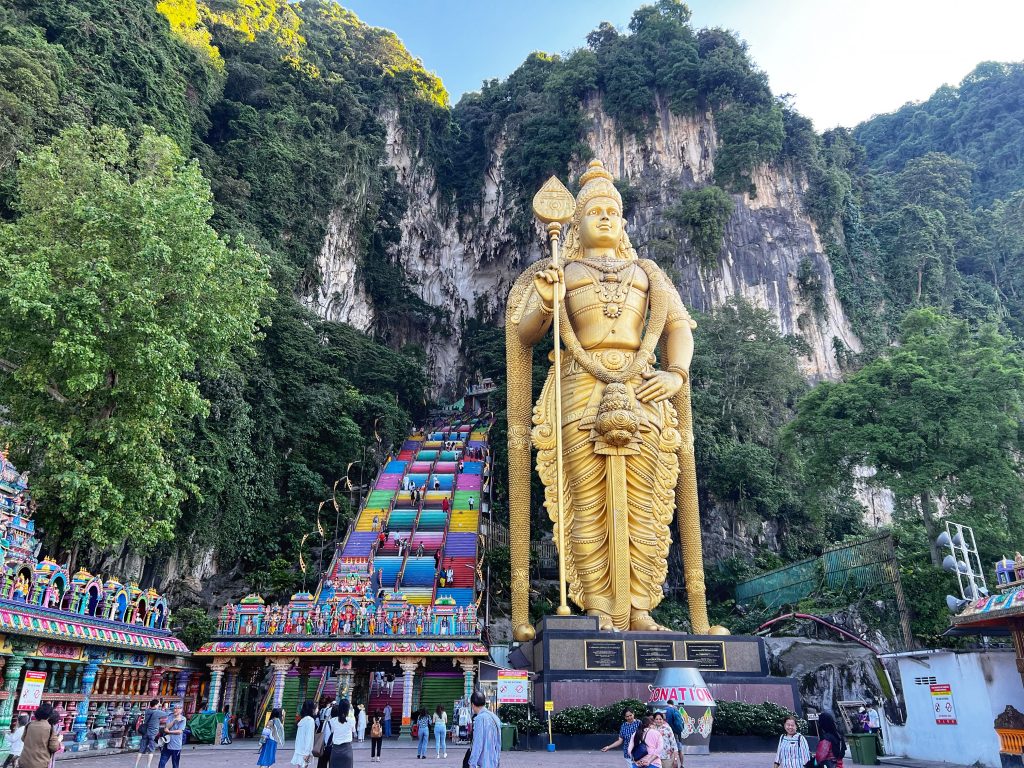
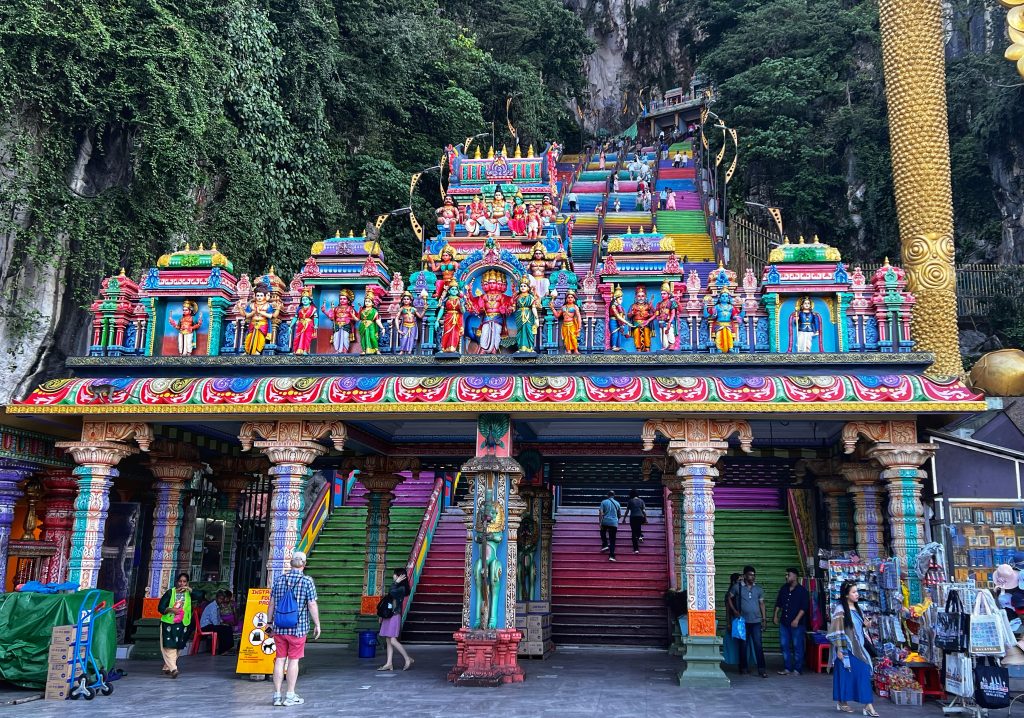
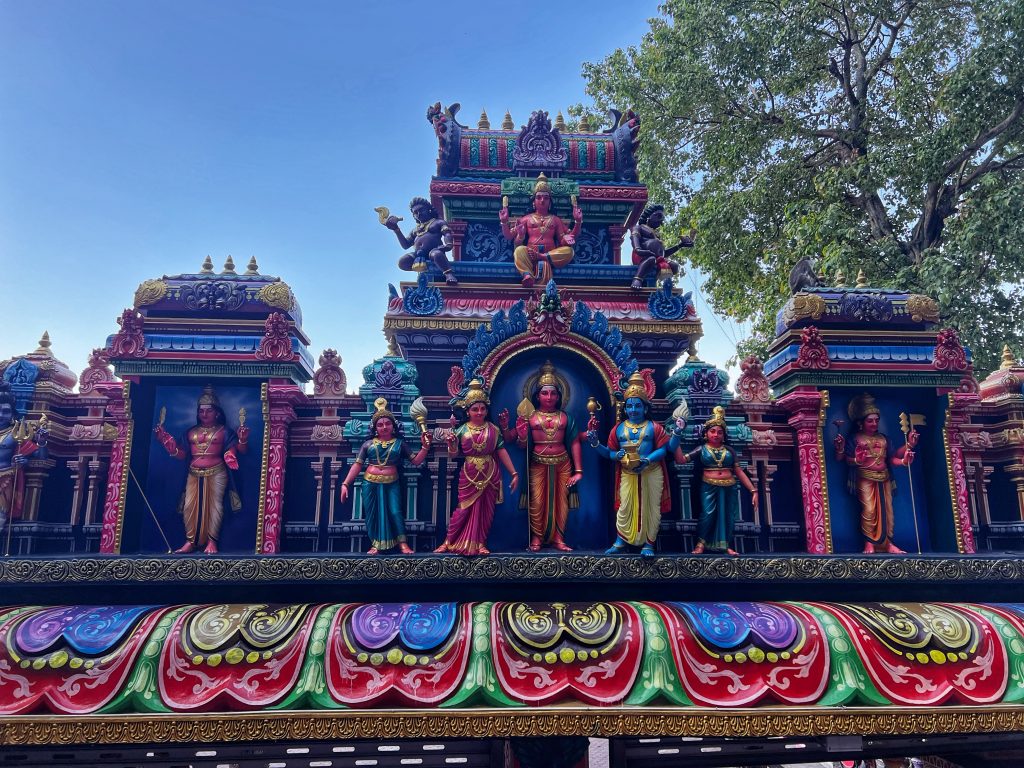
黑风洞的入口处有彩色的一个长长的楼梯,共有272个台阶,通往主要的洞穴之一,大殿洞(Cathedral Cave)。走在这些台阶上,可以近距离接触到很多长尾猕猴,它们根本无视游客的存在,有的在嬉戏打闹,有的在抱着小猕猴看景,有的在吃东西,有的在观察游客,伺机抢夺游客的东西,甚至有的在行短暂的房事 (我碰巧就录到了两段,哈哈)。
At the entrance of Batu Caves, there is a colorful long staircase with a total of 272 steps leading to one of the main caves, the Cathedral Cave. Walking on these steps, you can closely encounter many long-tailed macaques. They completely ignore the presence of tourists, some frolicking and playing, some holding baby macaques while enjoying the scenery, some eating, some observing tourists and waiting for opportunities to snatch things from them, and some even engaging in brief mating activities (I happened to record two instances, haha).
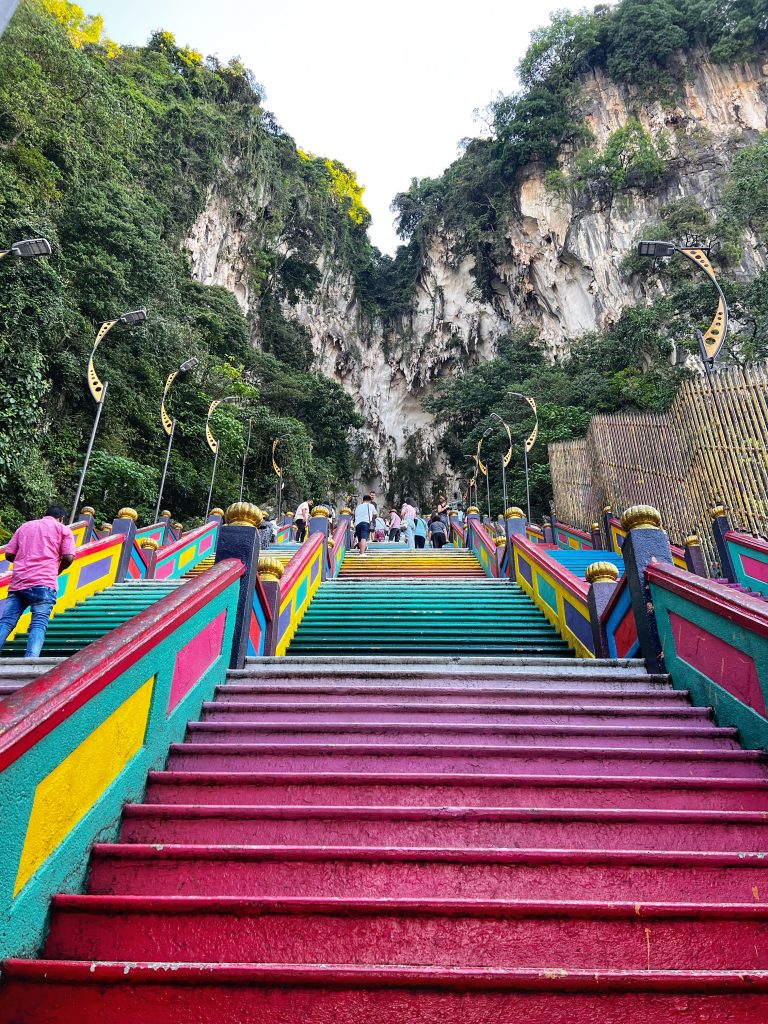
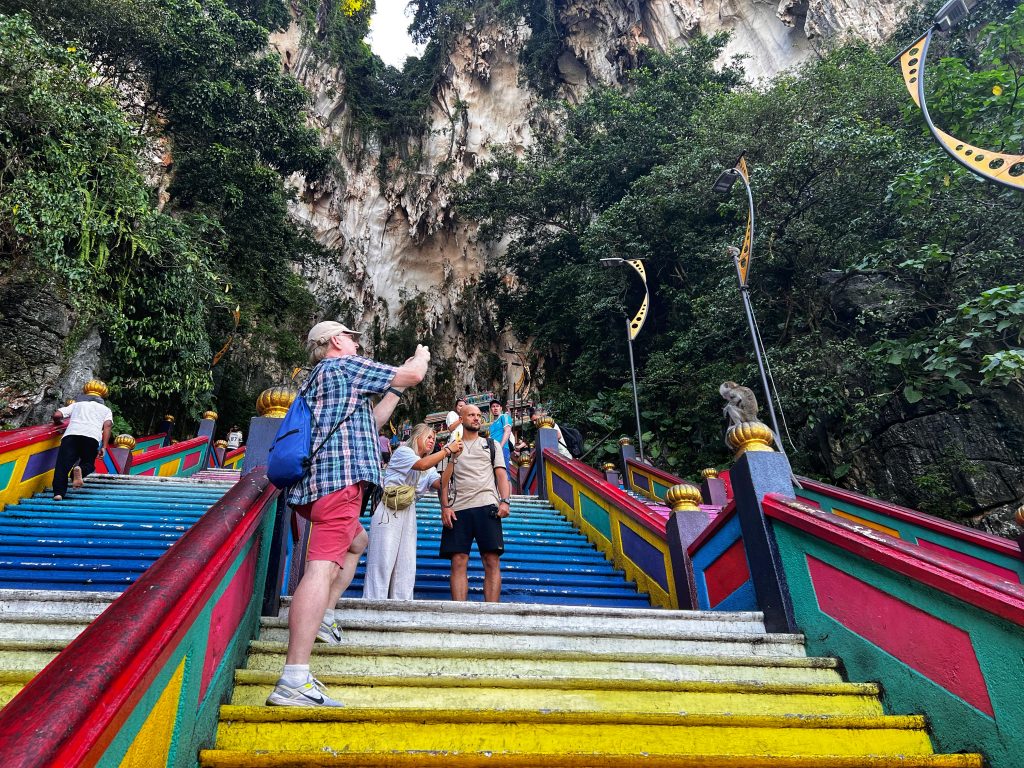
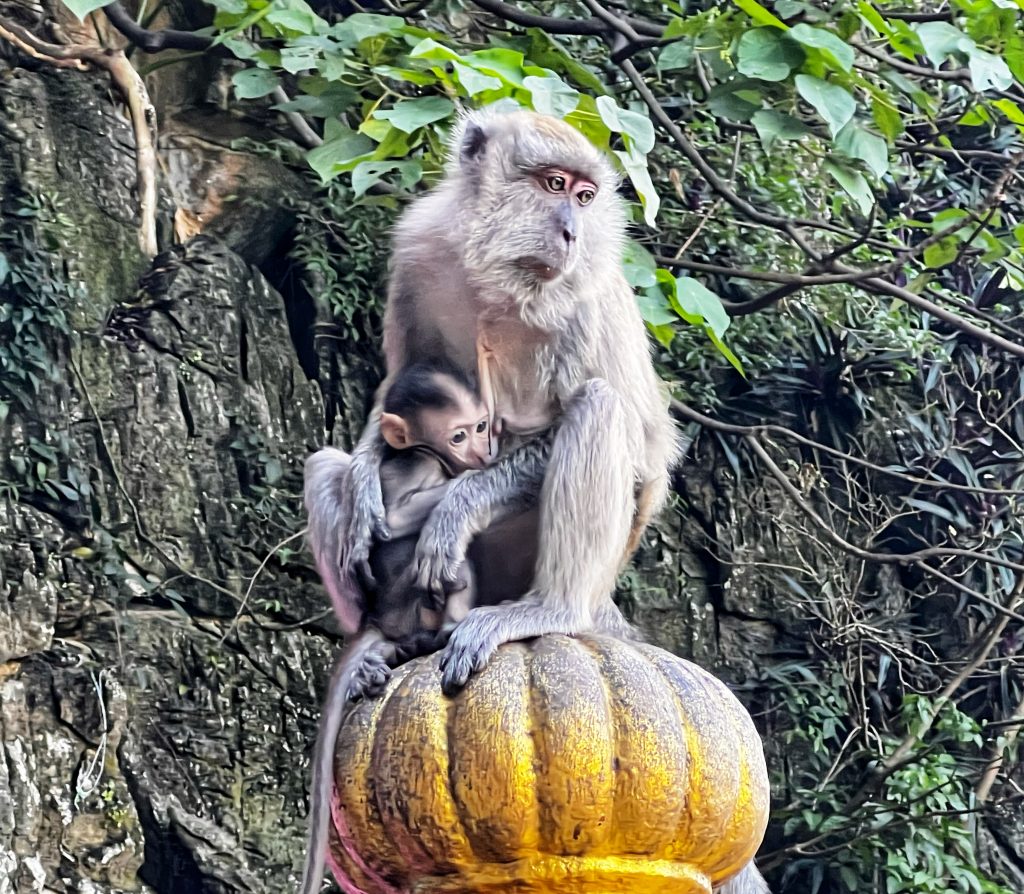
黑风洞之所以聚集了众多长尾猕猴,主要归功于这一地区丰富的自然食物资源和适宜的生活环境。此外,游客们经常向这些猕猴提供食物,这无意中促使它们汇集于此。这些猴子已经适应了人类的存在,并且学会了如何从游客手中获取食物。
正当我们忙于拍摄这些可爱的猴子时,一只猕猴已经下手要偷PJG背后的背包,另一位游客及时提醒了PJG,让他的背包得以幸免。然而,另一位拿着塑料袋的游客就没有那么幸运了,一只猕猴迅速夺走了她的塑料袋。PJG刚巧站在猴子面前,大声吼叫试图让它放下袋子。出乎意料的是,那只猴子反应激烈,冲着PJG露出尖锐的獠牙,并发出尖细的叫声,随后迅速跳到旁边的扶手上,开始尝试打开塑料袋中的水杯。经过几分钟的努力,连摔带拽的,它最后竟成功了。
The main reason for the large gathering of long-tailed macaques at Batu Caves is the abundant natural food resources and suitable living environment in this area. In addition, tourists often provide food to these macaques, which has unintentionally encouraged them to congregate here. These monkeys have adapted to human presence and have learned how to obtain food from tourists.
Just as we were busy photographing these adorable monkeys, a macaque was about to steal PJG’s backpack from behind. Another tourist alerted PJG in time, saving his backpack. However, another tourist holding a plastic bag was not so lucky. A macaque quickly snatched her plastic bag. PJG happened to be standing in front of the monkey and shouted loudly, trying to make it drop the bag. Unexpectedly, the monkey reacted aggressively, baring its sharp fangs at PJG and making threatening screams. It then quickly jumped onto the handrail beside it and started trying to open the water bottle in the plastic bag. After a few minutes of effort, throwing and pulling, it finally succeeded to open the bottle.
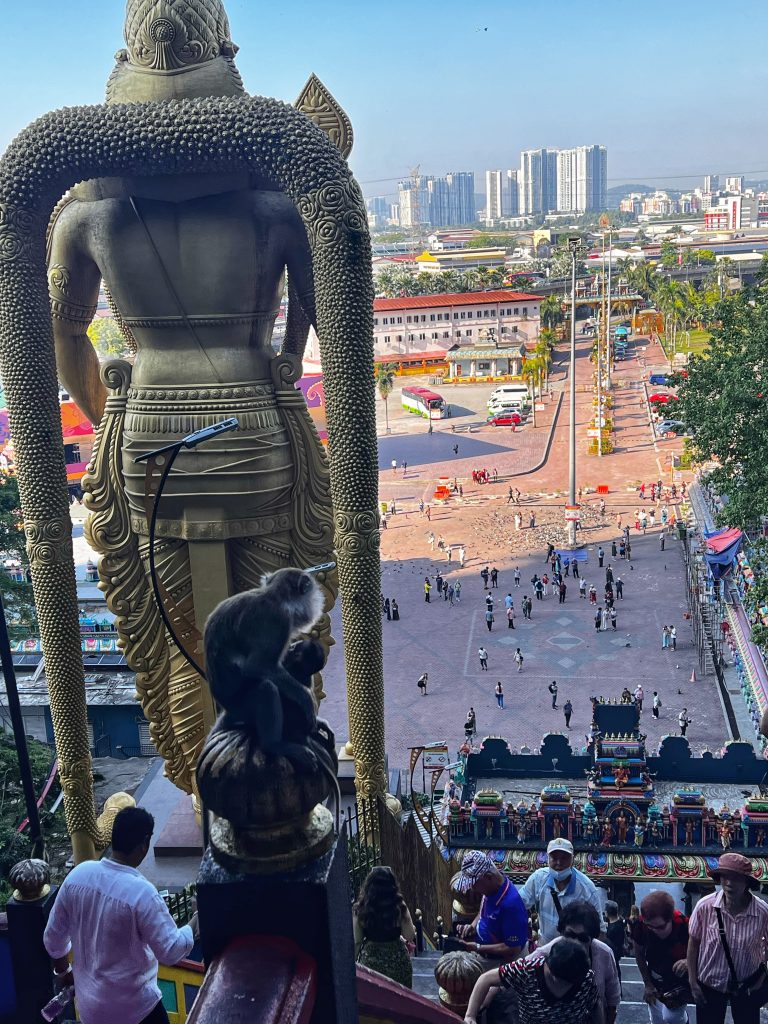
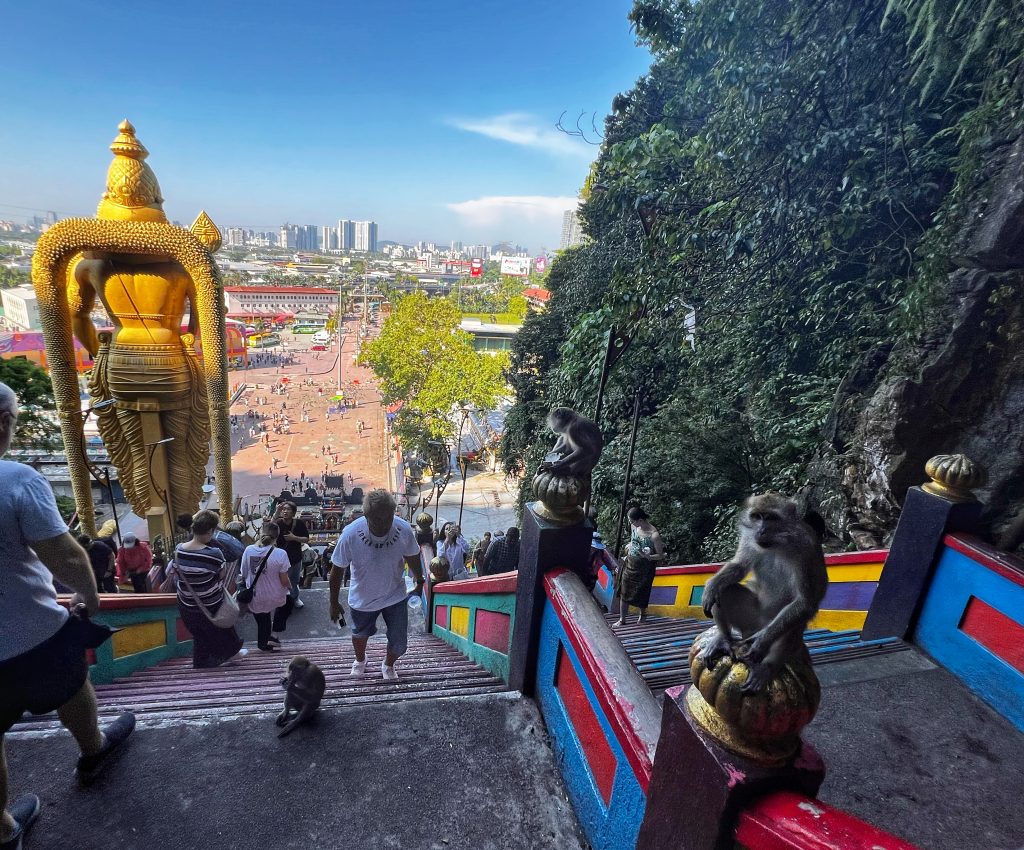
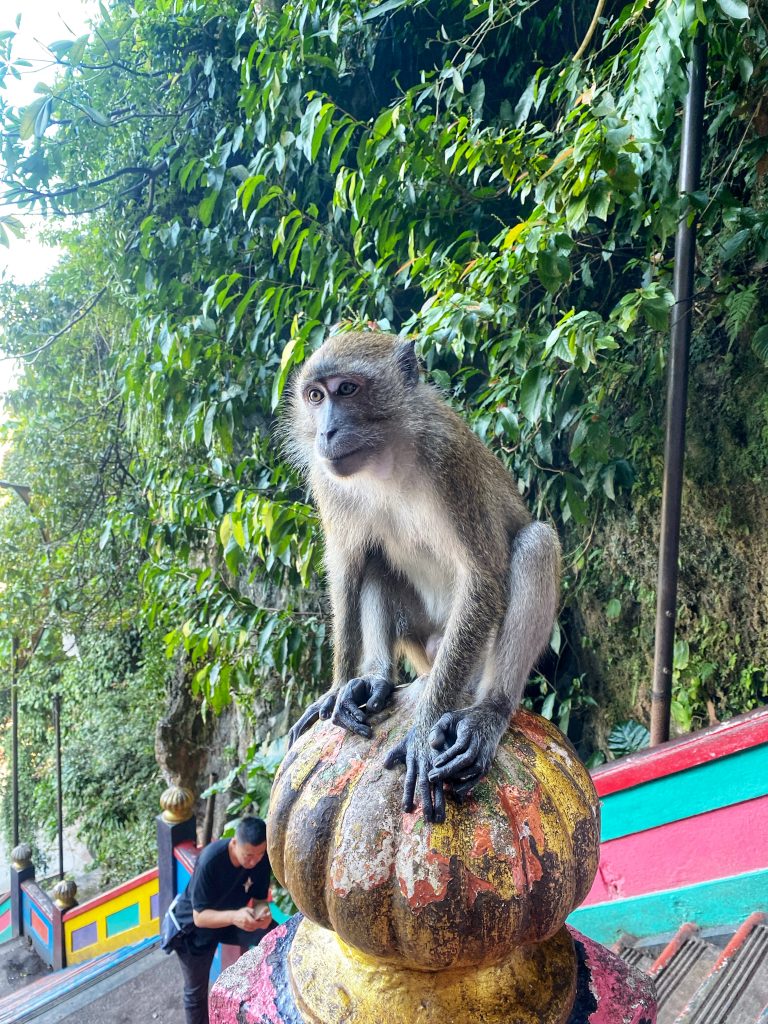
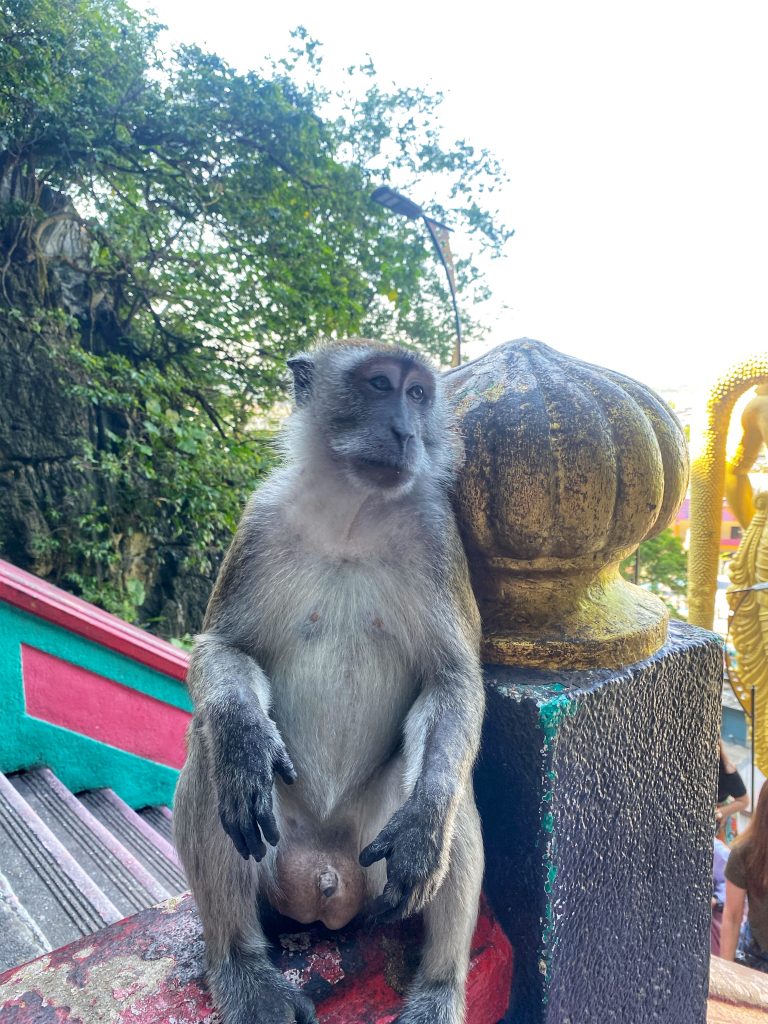
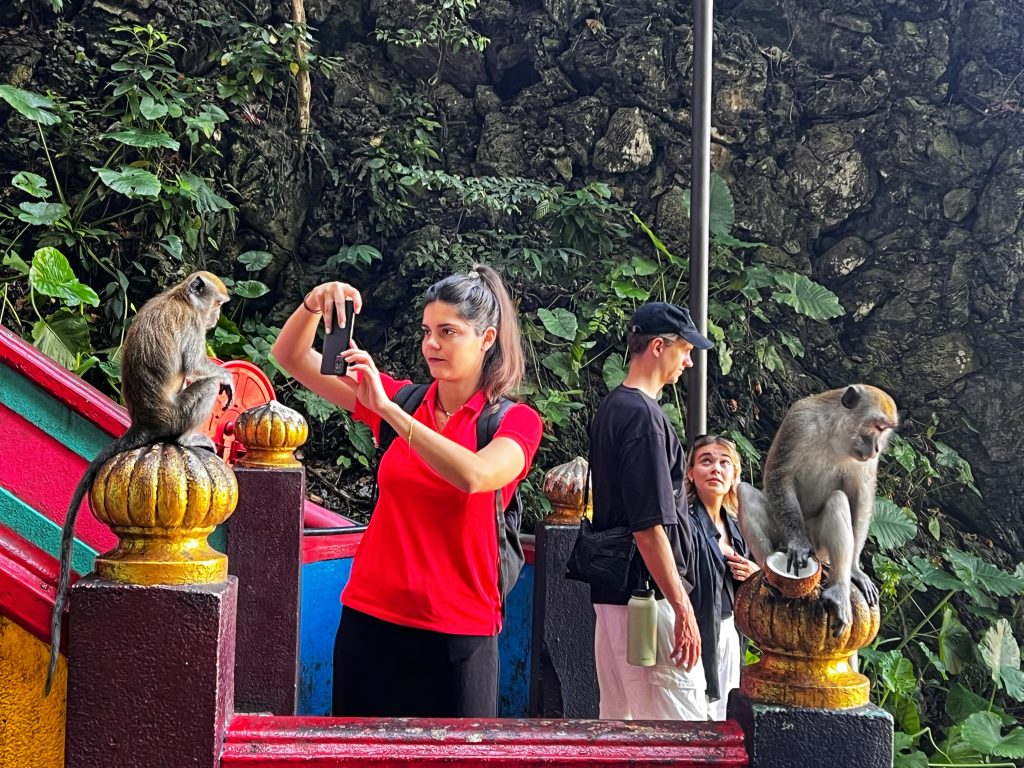
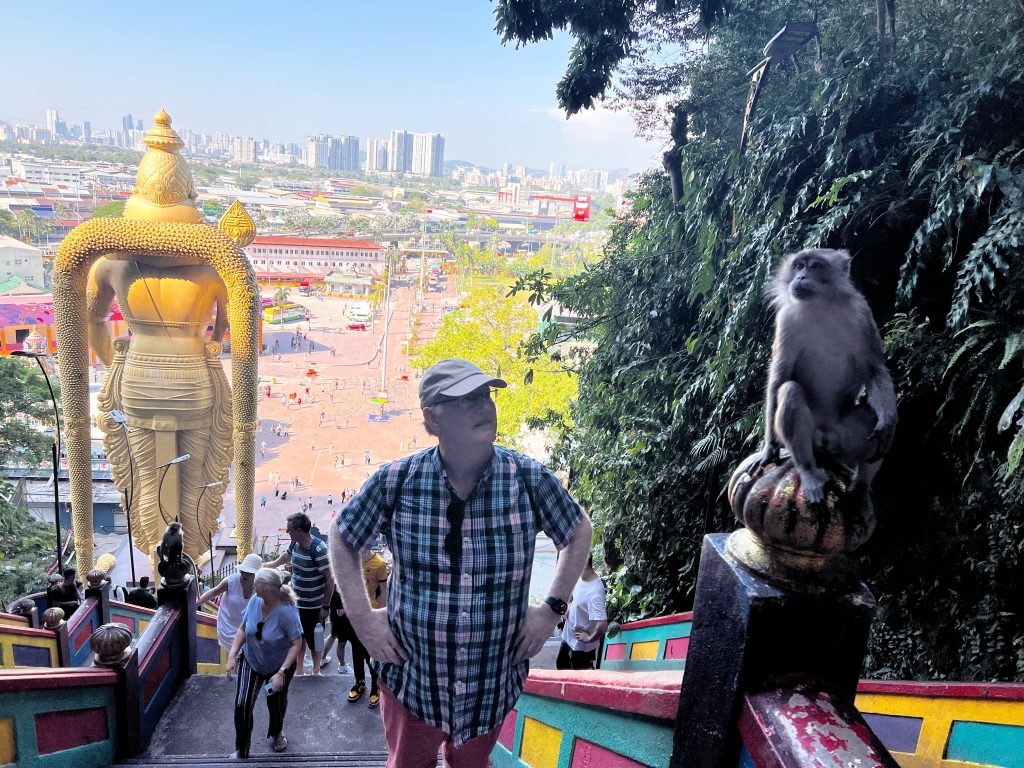
黑风洞是由400万年前形成的石灰岩山脉构成的一系列洞穴。这些石灰岩岩石经过数百万年的侵蚀和溶解作用,形成了今天的壮观的洞穴结构。据说,黑风洞的发现可以追溯到1878年,当时是由一位美国自然学家在进行地质研究时偶然发现的。随后,这个地方逐渐成为当地印度社区的宗教中心。1891年,印度教徒开始在这里建立寺庙和神像,使之成为重要的宗教场所,通往神庙洞的木制阶梯则是在1920年建造的。
Batu Caves is a series of caves formed by limestone hills that were created 400 million years ago. These limestone rocks, after millions of years of erosion have formed the magnificent cave structures that we saw today. It is said that the discovery of Batu Caves can be traced back to 1878 when an American naturalist accidentally discovered them while conducting geological research. Subsequently, this place gradually became a religious center for the local Indian community. In 1891, Hindus began to establish temples and deities here, making it an important religious site. The wooden staircase leading to the Temple Cave was constructed in 1920.

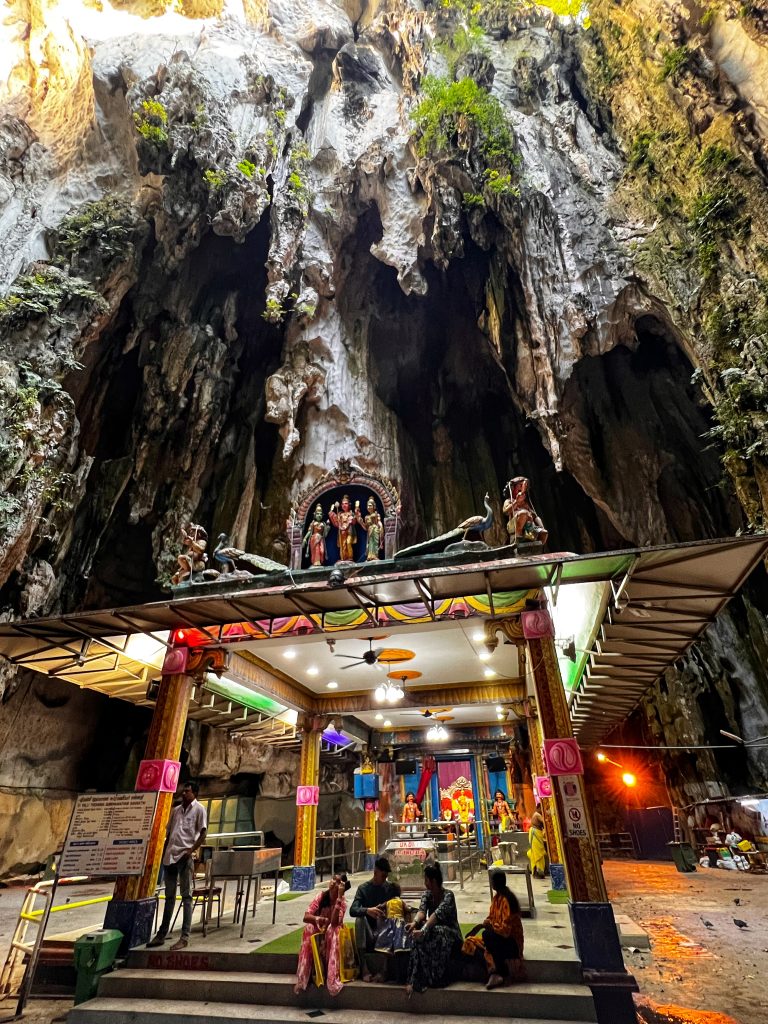
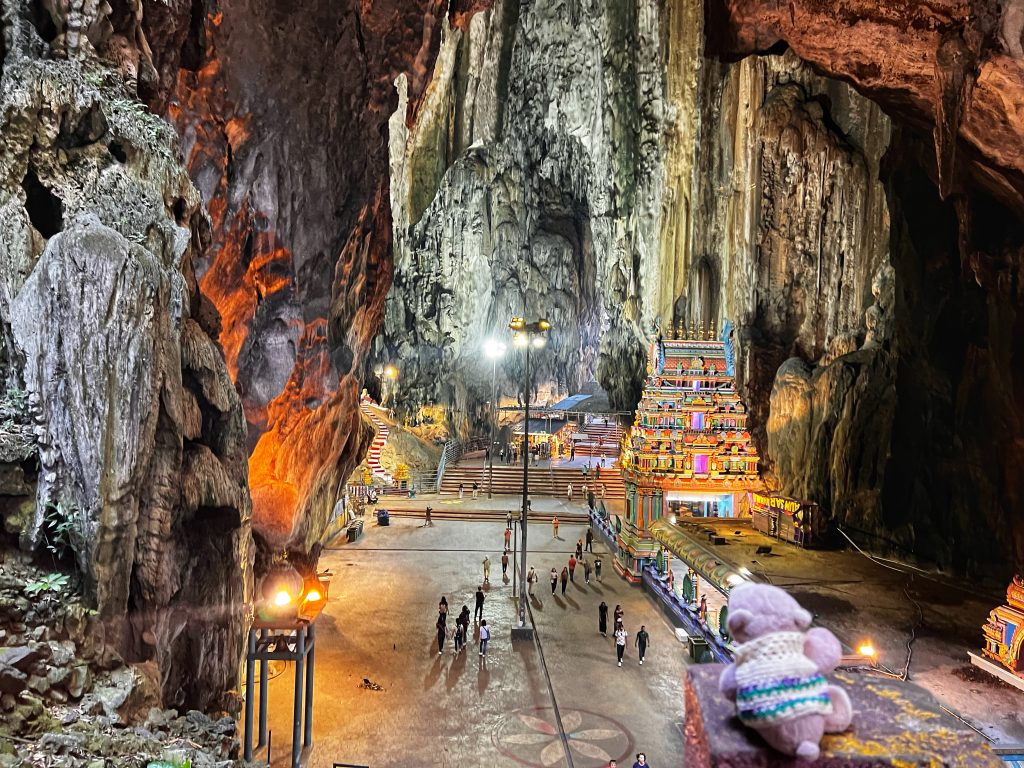
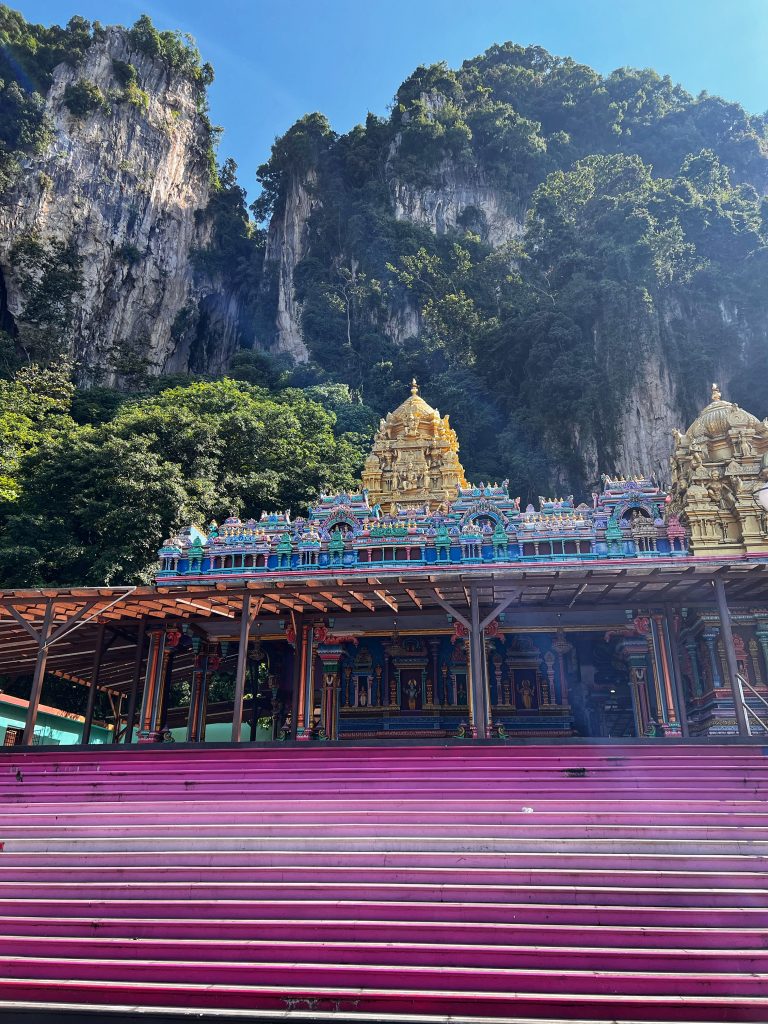
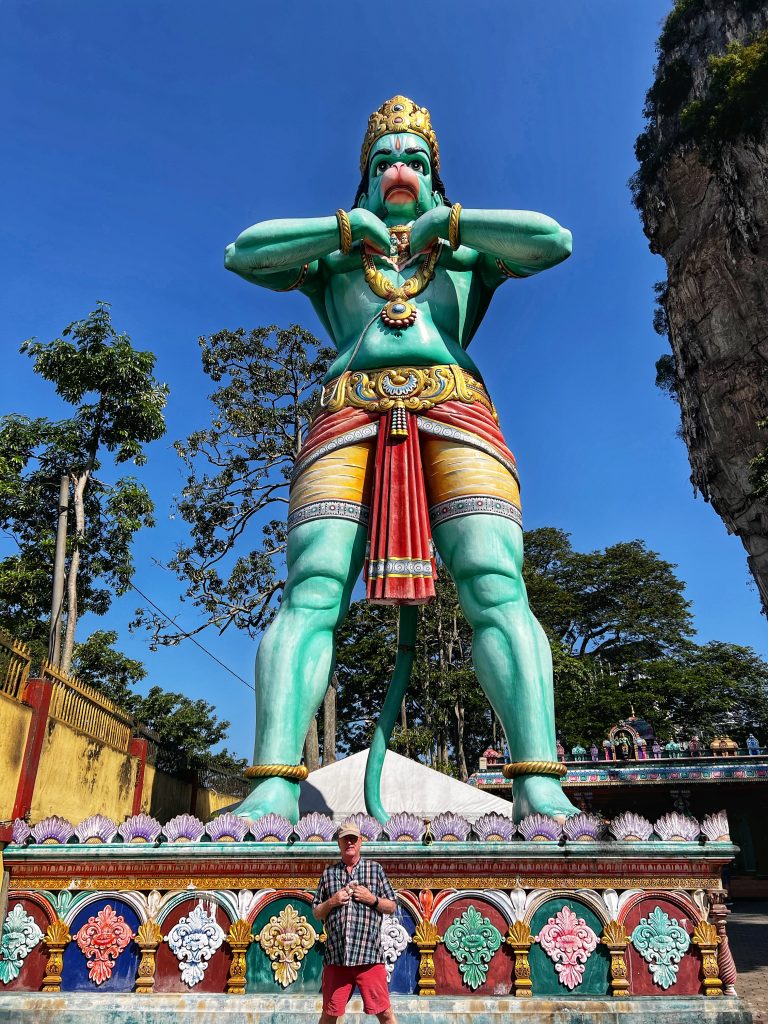
在完成对黑风洞的探索后,Grab返回酒店,在附近闻名的10号胡同美食街吃了午饭,Grab到火车站,四个多小时的火车之旅,又换乘渡轮,穿越波光粼粼的海面,随着夕阳西下,海面被染上了金色的光辉。晚上7点多,我们终于顺利回到了槟城的家中,结束了这次短暂愉快的旅程。
After completing the exploration of Batu Caves, we took a Grab back to the hotel and had lunch at the nearby famous food street, Lot 10. Then we took a Grab to the train station for the four-hour train journey to Butterworth, followed by a ferry ride.
As we crossed the shimmering sea surface, the sunset painted the water with a golden glow. Around 7 pm, we finally arrived safely back at our home in Penang, concluding this brief but enjoyable trip!

